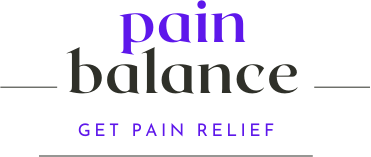
Pectoral Muscle Pain Left Side
Anytime you feel pectoral muscle pain left side, it could be a heart attack. The pectoral muscles are a set of skeletal muscles that connect the chest, hips, and lower body parts. If you feel pain in that area, it can be a problem, so you need to check out the cause.
One of the significant concerns with pain in the pectoralis is the possibility of a heart attack or warning signs of one. If you have issues with chest pain or any other symptoms you will read about, waste your time getting medical help.
This issue makes it vital to learn more about this problem and what you can do to help. If seeing a doctor isn’t an option, you must know which disease applies to you before attempting treatment. We will show you how to do so by following a few simple steps.
All you need to do is analyze all the symptoms you are experiencing and compare them to those below. Every condition that can cause pectoral pain shows the cause, symptoms, and treatment.
Using the information to see which one is similar will help with the treatment methods. We hope a doctor visit is possible as a heart attack is a grave issue requiring urgent attention.
Here are the known health problems that can cause pectoral pain in the left side of the chest.

Contents
Pectoral Muscle Pain Left Side – Likely Causes
Angina
Angina occurs when an underlying condition like coronary heart disease becomes more prevalent. If the heart lacks enough oxygen, it can cause pain in the chest.
The symptoms of angina are constant sharp chest pain and nausea that could lead to vomiting. Other symptoms of this condition are shortness of breath and signs of discomfort in the back, jaw, and neck. You may also experience abdominal pain.
Treatment for angina as prescribed by a doctor is aspirin, beta-blockers, and calcium channel blockers. You may receive blood cholesterol and high blood pressure medications. Nitrates and drugs that prevent clotting may also be required.
For those who prefer natural alternatives, grapefruit in abundance removes plaque from the arteries and lowers cholesterol. Using foods rich in omega-three can improve heart health. Lemon juice can prevent blood from clotting.
Myocarditis
Myocarditis occurs when the heart’s muscle becomes inflamed due to an infection. Viruses, fungus, and bacteria are known reasons for causing this condition.
Symptoms of myocarditis are fainting, fever, and chest pain. You may experience breathing difficulties which include breathing rapidly. Other symptoms are irregular and fast heartbeats.
Treatment for this condition prescribed by a doctor is corticosteroid therapy which fights inflammation. Other medical methods are beta-blockers and various cardiac medications.
Your physician may request the use of antibiotics and diuretic therapy. Lifestyle changes are another therapy that requires eating less salt, resting more, and avoiding fluid buildup.
A few possible natural alternatives are using a different salty type like pink Himalayas salt, which doesn’t cause water retention. Other methods are foods rich in anti-inflammatory and antifungal properties.
Cardiomyopathy
Cardiomyopathy occurs when the heart tissue becomes damaged through several other conditions. If you have had high blood pressure or rapid heartbeat problems for a long time, that could cause this condition.
Other known causes of cardiomyopathy are heart infections, heart valve issues, and NCDs like obesity, diabetes, and thyroid disease.
Symptoms of cardiomyopathy are chest pressure and discomfort, and fatigue. You may also experience fluttering or pounding heartbeat and problems lying flat.
Other symptoms include breathing issues when active and legs, ankles, and feet swell. Your stomach looks swollen, and coughing occurs when you lie down.
Treatment for this condition is anticoagulants, diuretics, angiotensin-converting enzyme, and beta-blockers which your doctor may prescribe. Other treatment methods are receptor blockers and anti-inflammatory medication.
You can use pink Himalayas salt to reduce fluid buildup and parsley as a diuretic for those seeking a natural approach. Many foods like turmeric and others are high in anti-inflammatory properties.
Garlic, red yeast rice, and Hawthorne are some of the known foods that work as receptor blockers.
Pectoral Muscle Pain Left Side – Other Causes
If you feel pectoral muscle pain on your left side, it may be a heart attack. If you recognize that that isn’t the case, it must be one of the conditions listed here. Take note of all the conditions to understand what you need to do clearly.
Pericarditis
Pericarditis occurs mainly after heart surgery or a heart attack. Some immune responses can trigger this condition, including viruses and diseases that cause inflammation.
Symptoms of pericarditis are fatigue, weakness, dry cough, and nausea. Other symptoms include a low fever, palpitations of the heart, and shortness of breath.
Treatment for this condition is corticosteroids, pain relievers, and inflammation reducers. Some drugs fight inflammation; others help with reducing the buildup.
A natural approach to treatment would be the various foods that fight inflammation. Some foods also help with pain; turmeric and white willow bark can help with pain relief.
Hiatal Hernia
A hiatal hernia occurs when the pressure in the stomach increases. This pressure happens from toilet straining, pregnancy, coughing, obesity, or old age. It can also be a congenital disability that worsens as you age.
Symptoms of a hiatal hernia are heartburn, chest pain, shortness of breath, and trouble swallowing. Other symptoms may include dark or bloody stool, vomiting, abdominal pain, and acid reflux.
Treatment for this condition is surgery to repair the esophageal sphincter. Other treatment methods are weight loss and drinking warm water first in the morning. Some exercises help restore the stomach to its original position.
Pulmonary Conditions
Pulmonary conditions occur when the blood to the lungs becomes blocked due to blood clots or high blood pressure in the lungs. These diseases are pulmonary embolism and pulmonary hypertension.
Other pulmonary diseases are asthma, lung cancer, pneumonia, pulmonary edema (lungs fluid buildup), and bronchitis. A collapsed lung is also a pulmonary condition.
Symptoms of pulmonary conditions are shortness of breath, fatigue, weakness, wheezing, and tightness in the chest. Other symptoms include repetitive respiratory infections, unexpected weight loss, and coughing with mucus.
You may also notice that your legs, feet, and ankles swell. Shortness of breath increases dramatically during physical exercise.
Treatment for this condition is a variety of options due to the various diseases. It is standard to have inhalers and medications to help with breathing. These keep the air passage open, allowing an unrestricted airflow for oxygen.
The doctor may prescribe painkillers and anti-inflammatory medication for any infection. If you have an infection due to bacteria, antibiotics will help, but virus-related diseases often leave on their own.
Lifestyle changes play a significant role in the help of treatments. Avoid smoking, regular exercise, drinking lots of fluids, and eating foods rich in antibiotics help. Eating lots of anti-inflammatory foods is vital.
Pectoral muscle pain left side symptoms indeed do indicate a severe health issue. These symptoms can be due to panic attacks, heartburn, muscle injury, so be sure to see a doctor immediately.
